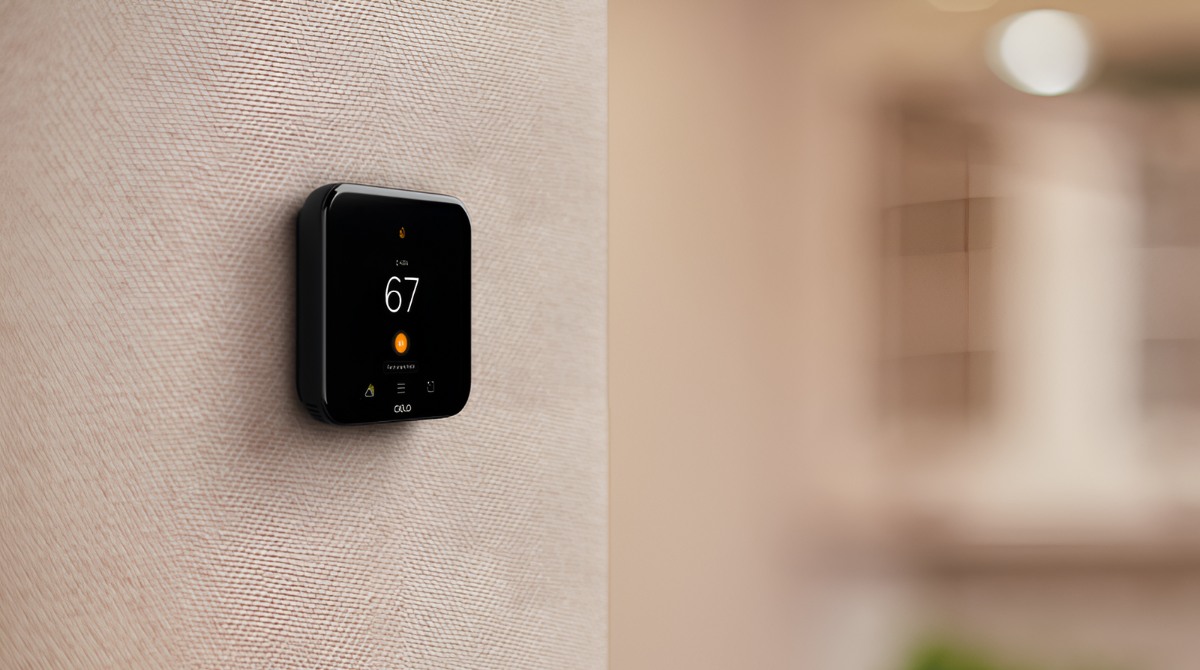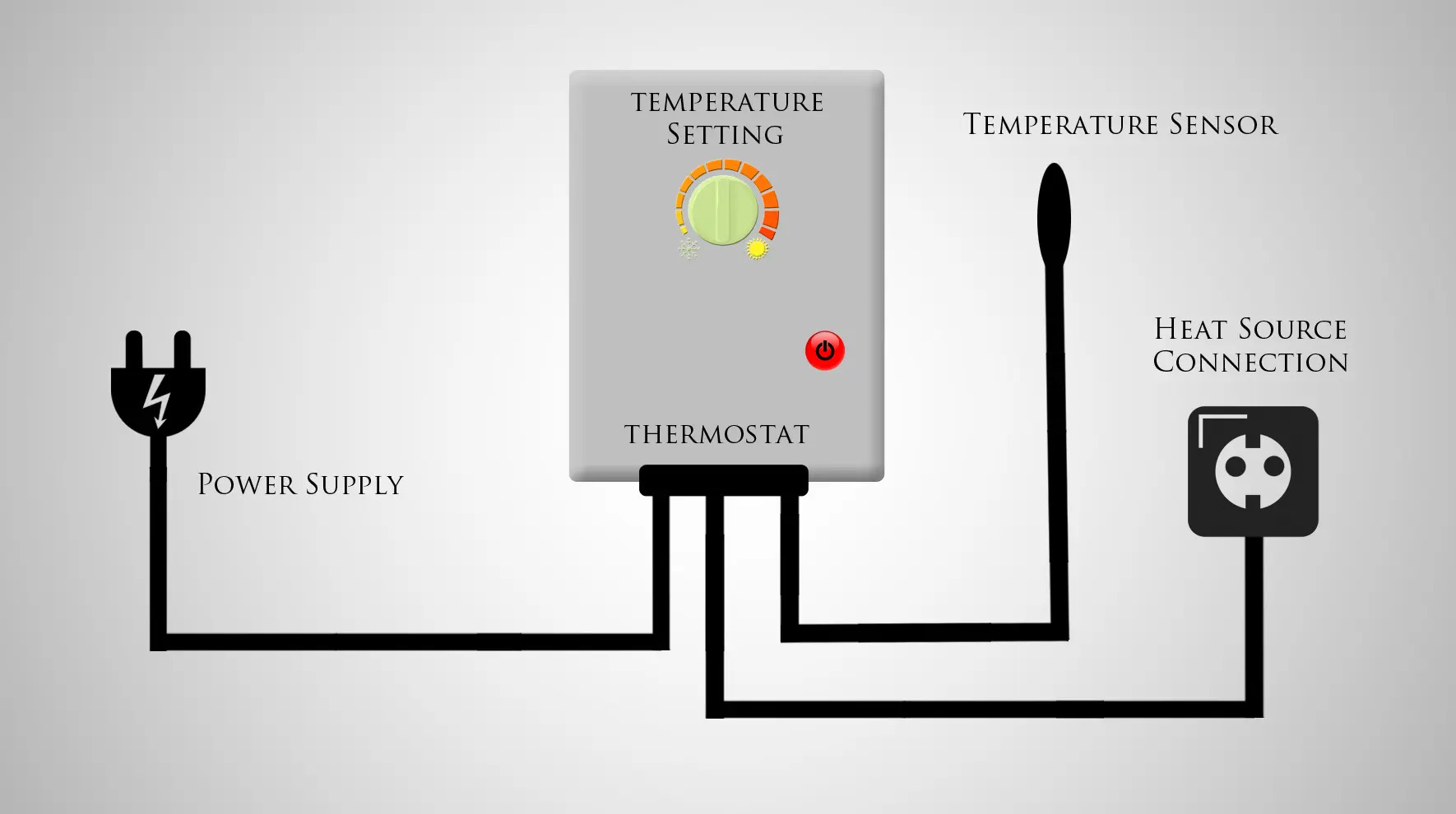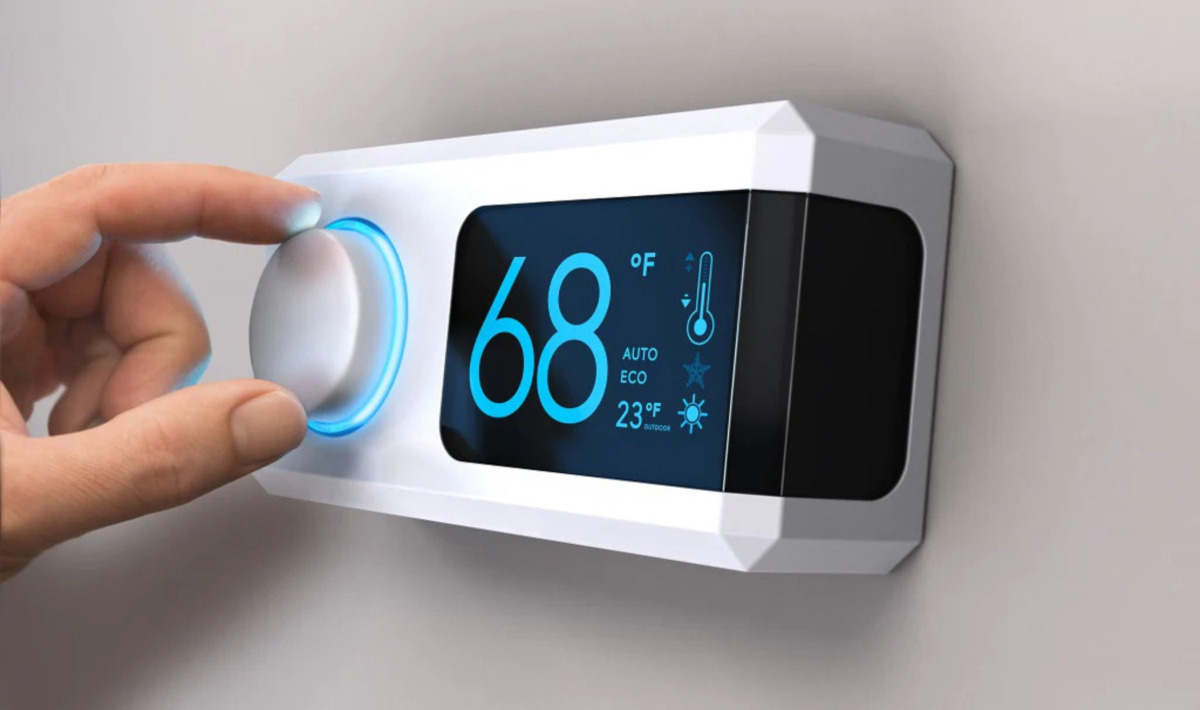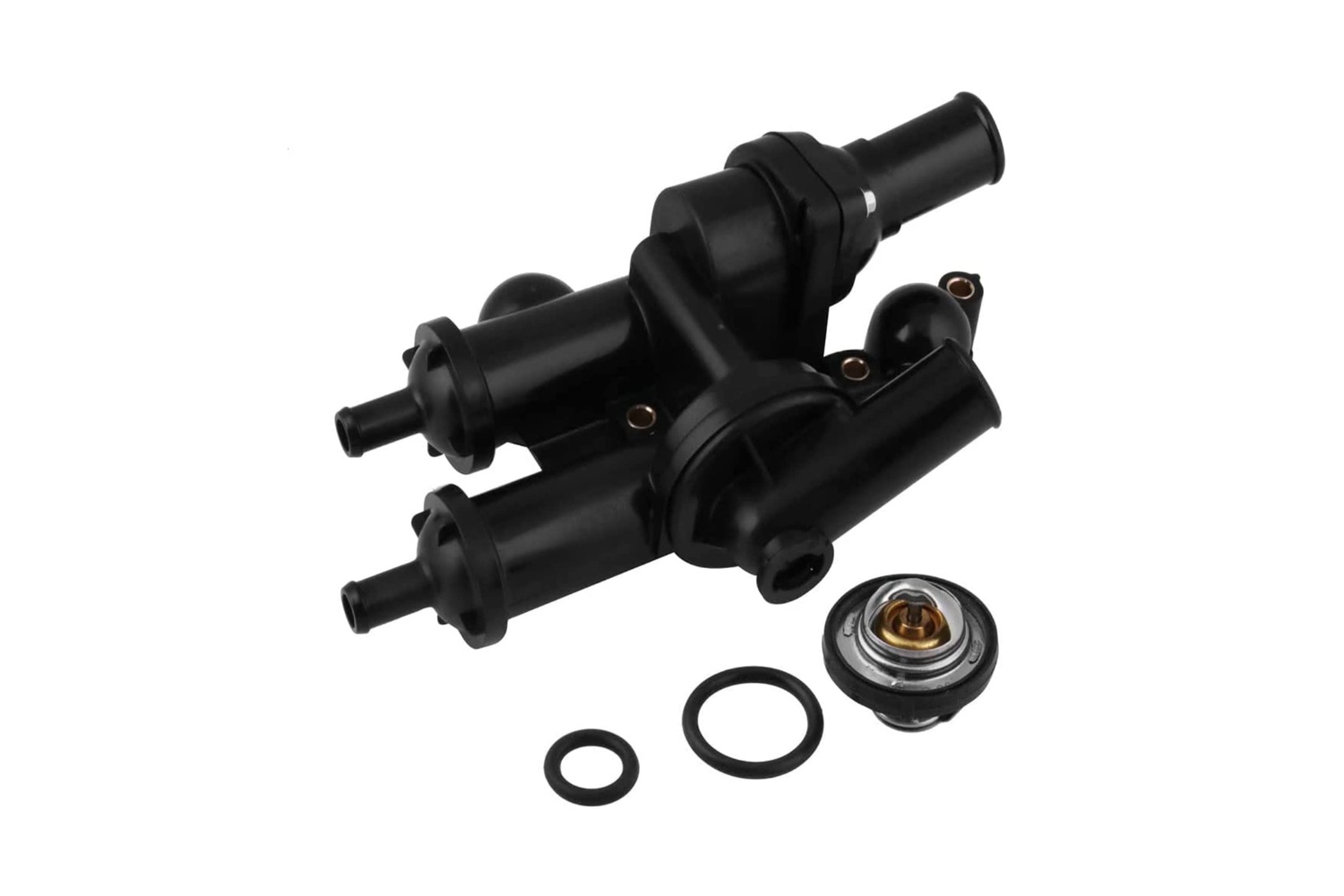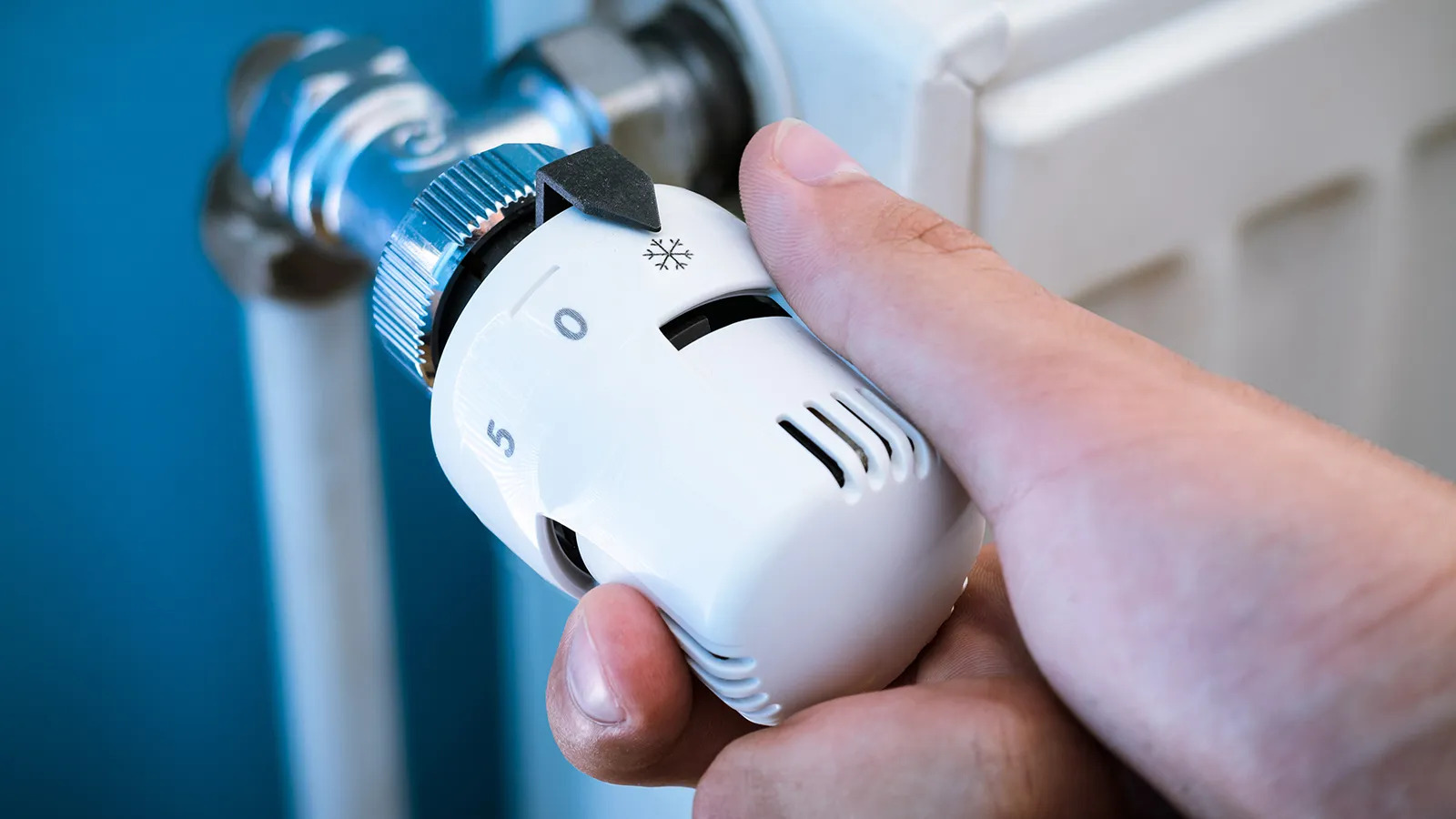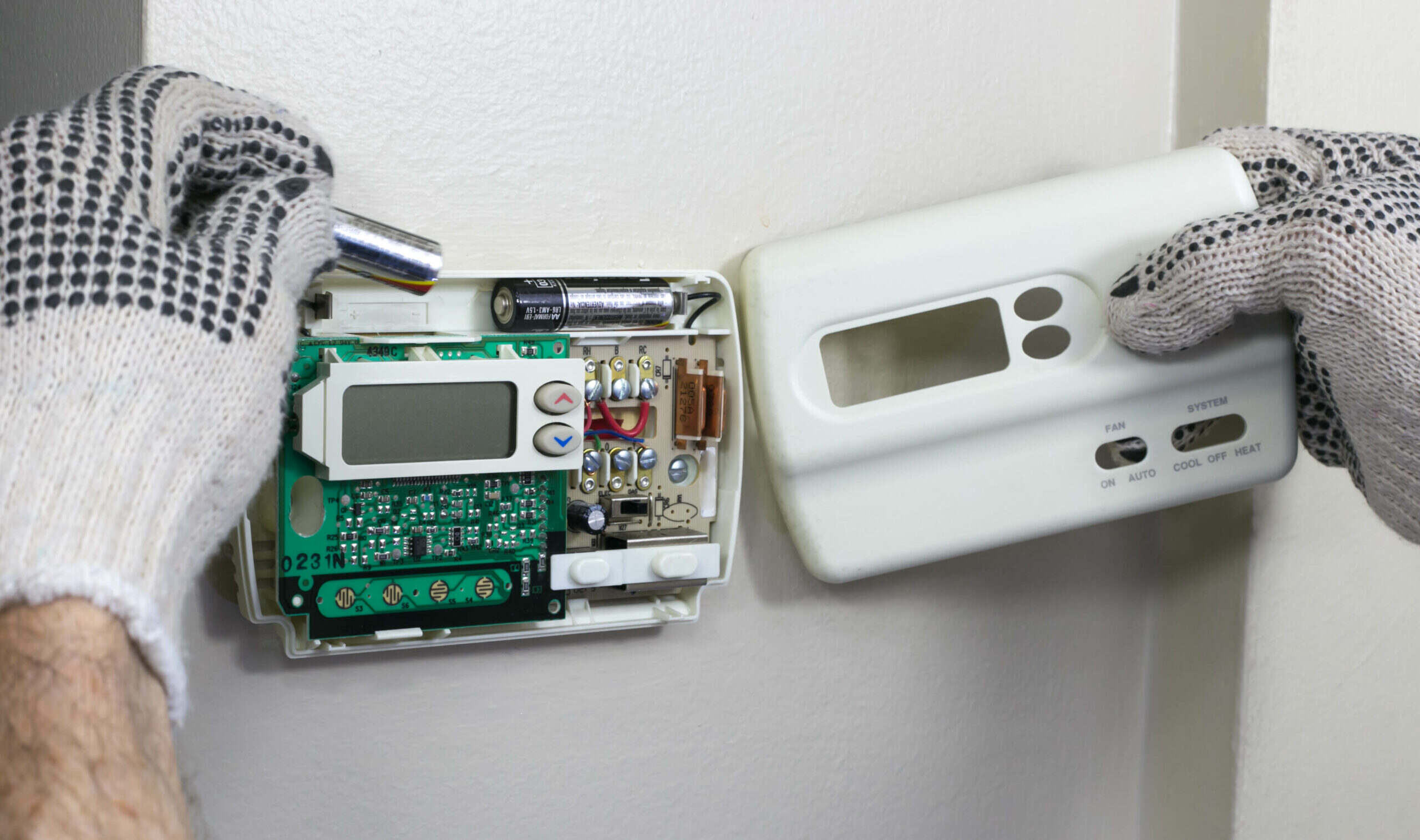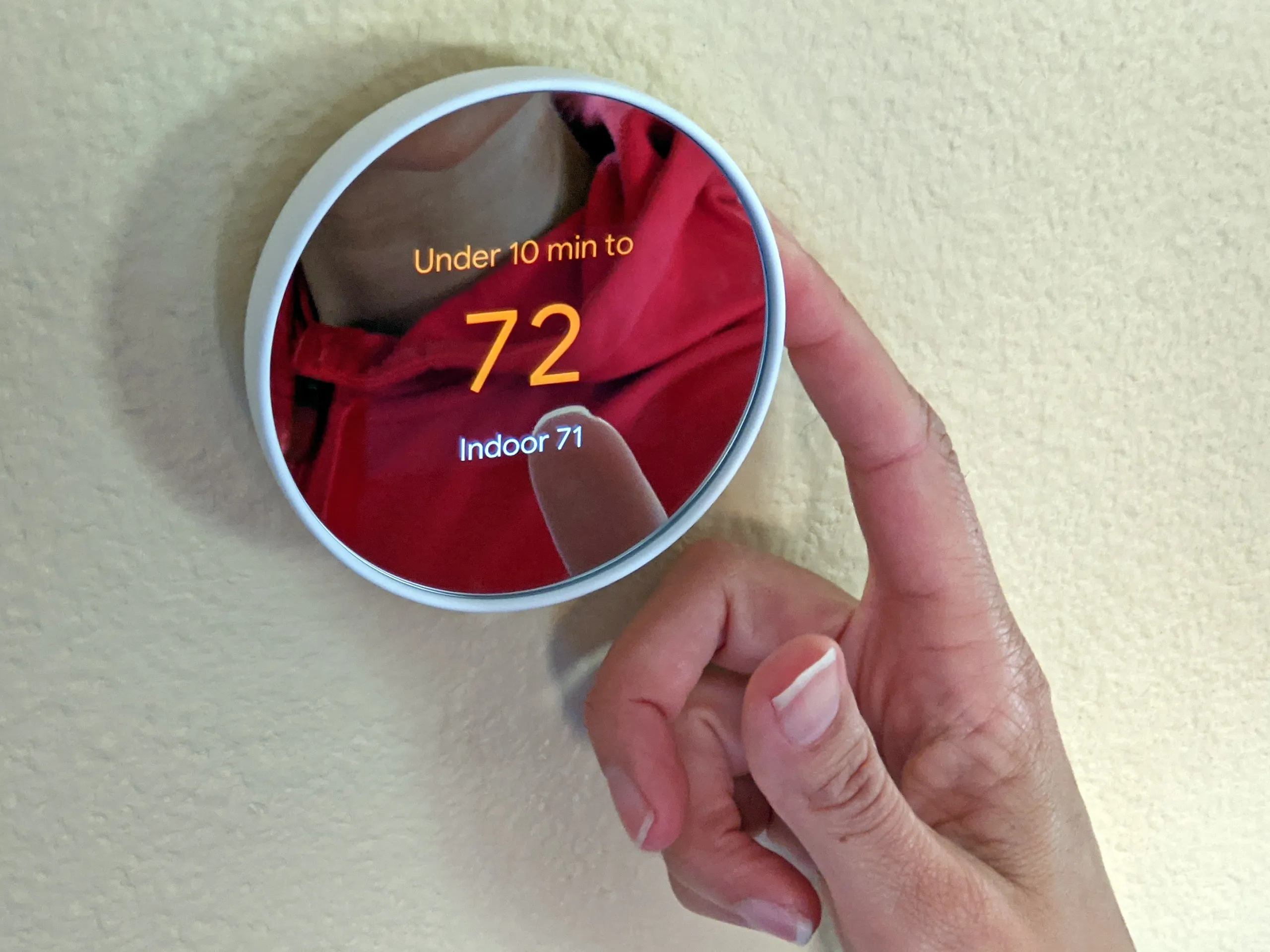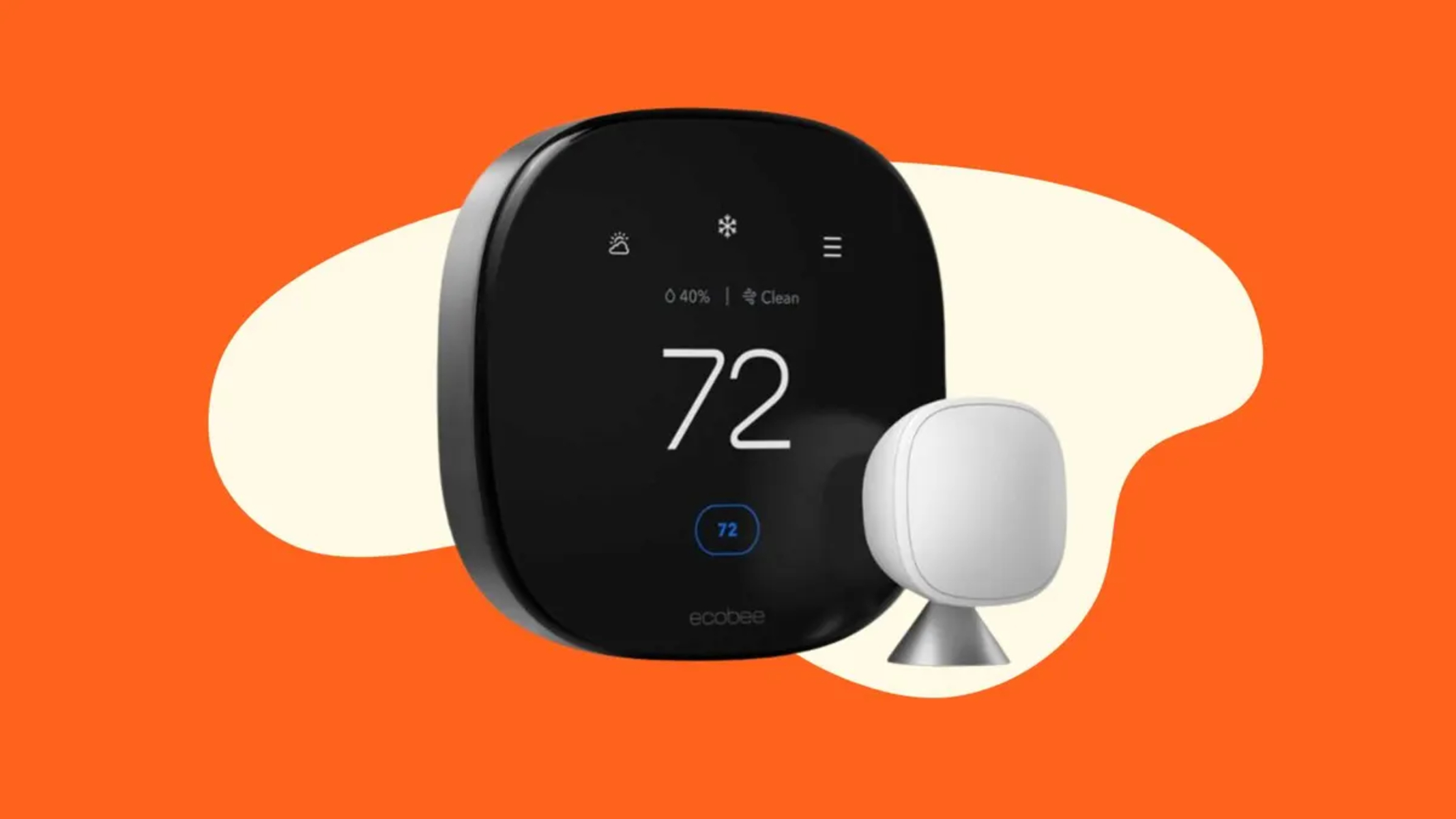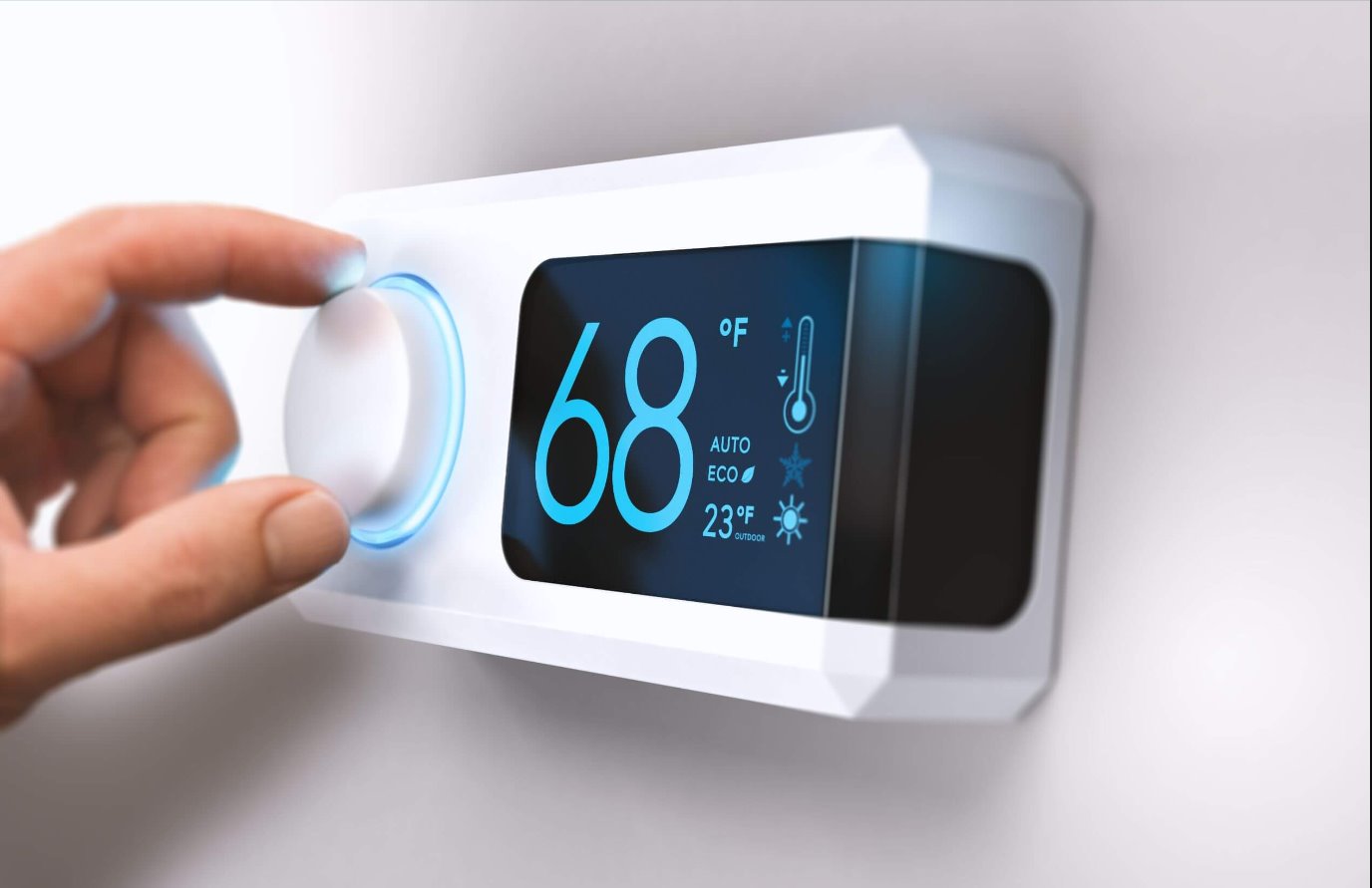Introduction
When it comes to maintaining a comfortable temperature in our homes, the type of thermostat we use plays a crucial role. While there are various types of thermostats available in the market, not all of them provide the same level of temperature control. Understanding the differences between traditional thermostats, programmable thermostats, and smart thermostats can help us make an informed decision when choosing the right thermostat for our needs.
Traditional thermostats have been a staple in households for decades. These thermostats typically operate using a simple dial or slider to adjust the temperature settings. While they can adequately control the temperature, they lack precision and may result in some fluctuation in the desired temperature range.
On the other hand, programmable thermostats offer additional features that allow users to set specific temperature schedules throughout the day. This allows for greater control and energy savings, as the thermostat can be programmed to lower the temperature when homeowners are away and raise it when they are expected to return. Programmable thermostats offer a more consistent and predictable temperature control, leading to increased comfort and potential energy cost savings.
Smart thermostats take temperature control to a whole new level. These technologically advanced devices can connect to the internet and be controlled remotely through smartphones or other smart devices. They utilize advanced algorithms and machine learning to adapt to homeowners’ schedules, preferences, and even weather conditions. The ability to analyze usage patterns and make automatic adjustments can result in optimal temperature control and further energy savings.
Comparing the temperature control capabilities of these different thermostat types, it becomes evident that smart thermostats provide the closest temperature control. Their ability to learn and adapt, combined with remote access and advanced programming features, offers homeowners precise control over their indoor climate.
However, before making a decision on which thermostat to choose, it is essential to consider various factors, such as budget, compatibility with existing HVAC systems, ease of installation and use, and desired features like energy monitoring or voice control. By evaluating these factors, homeowners can make an informed choice that best suits their needs and preferences.
Traditional Thermostats
Traditional thermostats have been around for years and are the most basic type of thermostat available. They typically consist of a dial or slider that allows users to adjust the desired temperature manually. While these thermostats serve their purpose of controlling the temperature, they lack the advanced features found in programmable and smart thermostats.
One of the main drawbacks of traditional thermostats is their limited precision in temperature control. Since they rely on manual adjustments, it can be challenging to set the temperature to an exact degree. This can lead to some fluctuation in the desired temperature range, resulting in occasional discomfort for homeowners.
Another limitation of traditional thermostats is the lack of scheduling options. They do not allow users to pre-set temperature schedules throughout the day. This means that homeowners have to manually adjust the temperature whenever they want to change it, which can be cumbersome and may result in temperature inconsistencies.
Additionally, traditional thermostats do not have any remote access capabilities. Users have to physically be present to adjust the temperature settings. This can be inconvenient, especially when homeowners are away from home and want to adjust the temperature to save energy or ensure a comfortable environment upon their return.
Despite these limitations, traditional thermostats continue to be popular due to their simplicity and affordability. They are relatively easy to install and operate, making them a suitable choice for homeowners who are not interested in advanced features or remote access capabilities.
In summary, traditional thermostats offer basic temperature control functionality but lack the precision, scheduling options, and remote access capabilities found in programmable and smart thermostats. While they serve their purpose adequately, homeowners may experience occasional fluctuations in the desired temperature range and the need for manual adjustments throughout the day.
Programmable Thermostats
Programmable thermostats offer significant improvements in temperature control compared to traditional thermostats. These thermostats are designed to allow users to set specific temperature schedules for different times of the day, providing a more efficient and consistent temperature control experience.
One of the key advantages of programmable thermostats is their ability to save energy and reduce heating or cooling costs. By setting temperature schedules that align with homeowners’ daily routines, these thermostats can automatically adjust the temperature when residents are away, and optimize it for comfort when they are at home. This not only helps to maintain a comfortable environment but also results in cost savings by reducing unnecessary heating or cooling when it is not needed.
Another benefit of programmable thermostats is the precision they offer in temperature control. Unlike traditional thermostats, which rely on manual adjustments, programmable thermostats allow users to set the desired temperature to an exact degree. This ensures greater accuracy and eliminates the temperature fluctuations experienced with traditional thermostats.
In terms of convenience, programmable thermostats simplify the process of temperature control. Once the temperature schedules are initially set, homeowners don’t have to continuously make manual adjustments. The thermostat automatically adjusts the temperature according to the pre-programmed schedule, eliminating the need for constant monitoring and adjustments.
While programmable thermostats offer significant improvements over traditional thermostats, they do have a few limitations. For instance, they rely on homeowners setting and adjusting the temperature schedules manually. If daily routines change or unexpected events occur, the temperature schedules may not align with the actual needs, resulting in less effective temperature control.
Additionally, programmable thermostats do not offer remote access capabilities. Users cannot control the thermostat from a distance or make real-time adjustments using a smartphone or other smart devices. However, some programmable thermostats do provide Wi-Fi connectivity, allowing users to control and monitor the thermostat remotely through a smartphone app.
In summary, programmable thermostats offer improved temperature control compared to traditional thermostats. They provide energy savings, precision in temperature control, and convenience through pre-set schedules. However, users need to manually set and adjust the temperature schedules, and remote access capabilities may not be available in all models.
Smart Thermostats
Smart thermostats represent the latest advancements in temperature control technology, offering homeowners a level of control and convenience that surpasses traditional and programmable thermostats. These innovative devices are equipped with advanced features, connectivity options, and intelligent algorithms that enable precise and adaptable temperature control.
One of the key advantages of smart thermostats is their ability to connect to the internet, allowing users to control and monitor their thermostat remotely using smartphones or other smart devices. This remote access feature provides homeowners with unparalleled convenience, as they can adjust the temperature settings even when they are away from home. Whether you want to ensure a comfortable environment upon your return or want to conserve energy while you’re away, smart thermostats give you the flexibility to do so.
Smart thermostats also incorporate machine learning and advanced algorithms that enable them to adapt to homeowners’ schedules, preferences, and even local weather conditions. By analyzing usage patterns and making automatic adjustments, these thermostats constantly optimize temperature control for maximum comfort and energy efficiency. The ability to learn and adapt means that smart thermostats can provide precise and consistent temperature control, minimizing temperature fluctuations and ensuring a comfortable environment at all times.
Energy savings is another significant advantage of smart thermostats. Many models are equipped with features like occupancy sensors and geofencing, which automatically adjust the temperature based on whether or not residents are in the house. By optimizing temperature control and reducing energy waste, smart thermostats can help reduce heating and cooling costs.
In addition to the remote access and energy-saving features, smart thermostats often integrate with smart home ecosystems and voice assistants. This allows users to control the thermostat using voice commands or through other connected devices, further enhancing the convenience and accessibility of temperature control.
However, it’s important to note that smart thermostats tend to be more expensive than traditional and programmable thermostats. The initial cost of purchasing and installing a smart thermostat may be higher, and some models require professional installation. Additionally, users need to ensure compatible HVAC systems and have a stable internet connection for optimal functionality.
In summary, smart thermostats offer a wide range of advanced features and connectivity options that provide homeowners with precise control over their indoor temperature. Remote access, machine learning, and energy-saving features make smart thermostats an excellent choice for those seeking the closest and most adaptable temperature control.
Comparison of Temperature Control
When it comes to temperature control, there are distinct differences between traditional, programmable, and smart thermostats. Understanding these differences can help homeowners make an informed decision based on their specific needs and preferences.
Traditional thermostats provide basic temperature control but lack the precision of programmable and smart thermostats. Manual adjustments using dials or sliders may result in some temperature fluctuations, leading to occasional discomfort. Traditional thermostats also do not offer the convenience of scheduling options or remote access capabilities, requiring constant manual adjustments.
Programmable thermostats offer improved temperature control compared to traditional thermostats. Users can set specific temperature schedules to align with daily routines, resulting in consistent comfort and energy savings. With precise temperature adjustments, programmable thermostats eliminate the temperature fluctuations experienced with traditional thermostats. However, they require manual setting and adjustment of temperature schedules, and remote access capabilities may not be available in all models.
Smart thermostats provide the closest and most adaptable temperature control. By connecting to the internet, these thermostats offer remote access through smartphones or other smart devices. Users can adjust the temperature settings from anywhere, ensuring a comfortable environment upon their return or optimizing energy usage while away. Smart thermostats also utilize machine learning and advanced algorithms to adapt to homeowners’ schedules and preferences, resulting in precise and consistent temperature control. Energy-saving features such as occupancy sensors and geofencing further enhance temperature control and reduce heating and cooling costs.
Additionally, smart thermostats often integrate with smart home ecosystems and voice assistants, providing seamless control through voice commands or other connected devices.
While traditional thermostats are the most affordable option, programmable and smart thermostats tend to be more expensive. Programmable thermostats offer a balance between cost and improved temperature control, while smart thermostats provide the highest level of convenience and adaptability but at a higher price point. Users should consider their budget, HVAC system compatibility, desired features, and installation requirements when choosing the right thermostat.
In summary, traditional thermostats provide basic temperature control, while programmable thermostats offer improved consistency through pre-set schedules. Smart thermostats, with their remote access, machine learning, and energy-saving features, provide the closest and most adaptable temperature control. The choice ultimately depends on individual preferences, budget, and desired features.
Factors to Consider When Choosing a Thermostat
Choosing the right thermostat for your home requires careful consideration of various factors. By evaluating these factors, you can make an informed decision that aligns with your needs, preferences, and budget. Here are some key factors to consider when choosing a thermostat:
- Compatibility: Ensure that the thermostat you choose is compatible with your HVAC (Heating, Ventilation, and Air Conditioning) system. Different systems may require specific thermostat models, so it’s essential to check compatibility before making a purchase.
- Features: Consider the features you need in a thermostat. Do you want basic temperature control, pre-set scheduling options, or advanced features like remote access and energy-saving capabilities? Identifying the desired features will help narrow down your options.
- Installation: Evaluate the installation process for each thermostat option. Some thermostats may require professional installation, while others can be easily installed as a DIY project. Consider your comfort level with installation or factor in the cost of professional installation when making your decision.
- Usability: Assess the ease of use of each thermostat option. Some models have user-friendly interfaces and intuitive controls, while others may have a steeper learning curve. Consider your comfort level with using technology and choose a thermostat that you can operate effortlessly.
- Budget: Set a budget for your thermostat purchase. Traditional thermostats tend to be the most affordable, while programmable and smart thermostats can be more expensive. Consider the long-term energy savings and features that justify the upfront cost of a more advanced thermostat.
- Energy Efficiency: If energy efficiency is a priority for you, consider thermostats with energy-saving features. Programmable and smart thermostats often offer scheduling options, occupancy sensors, and adaptive algorithms that optimize energy usage and reduce heating or cooling costs.
- Compatibility with Smart Home Systems: If you have a smart home ecosystem or plan to integrate your thermostat with other smart devices, ensure that the thermostat is compatible with the existing system. This will allow you to control and monitor the thermostat using voice commands or other connected devices.
By considering these factors, you can make a well-informed decision when choosing a thermostat that meets your temperature control needs, budget, and desired features. Remember to prioritize compatibility, usability, energy efficiency, and installation requirements to ensure a seamless and comfortable experience in your home.







